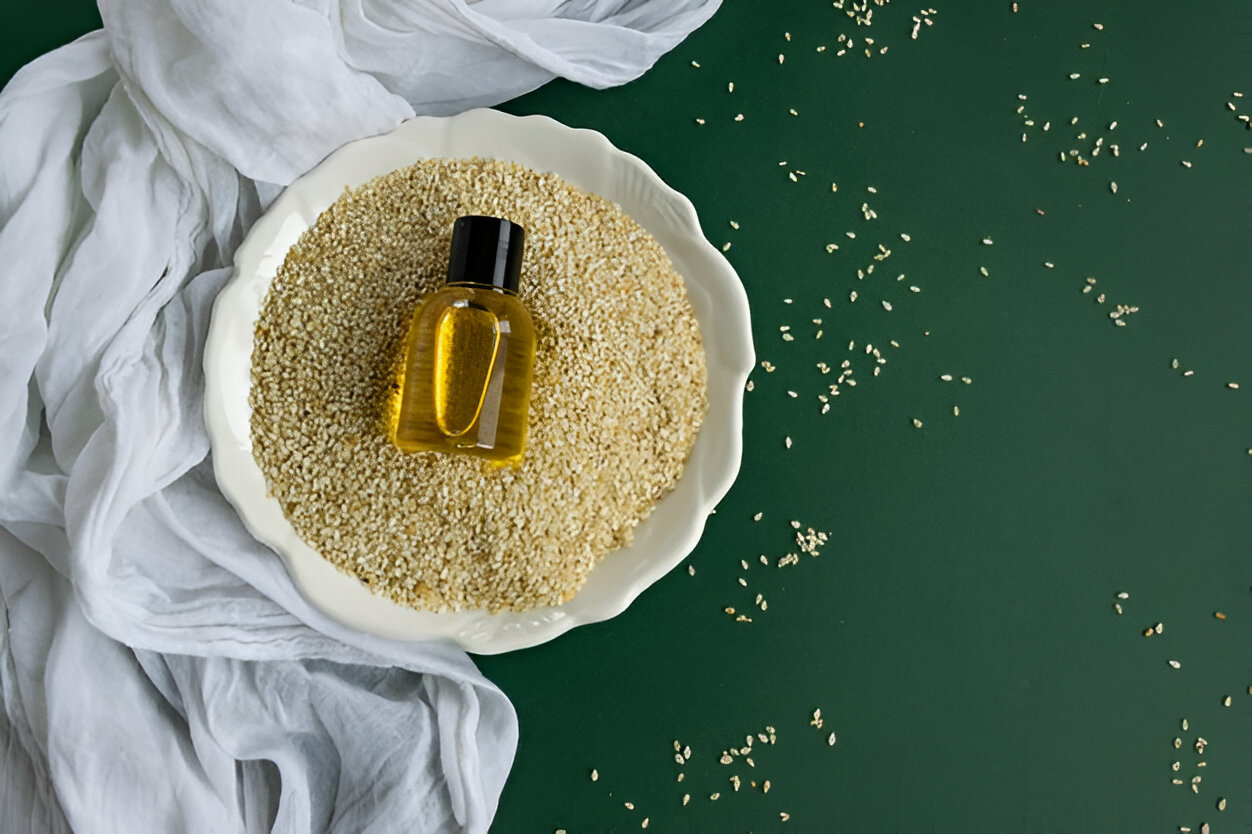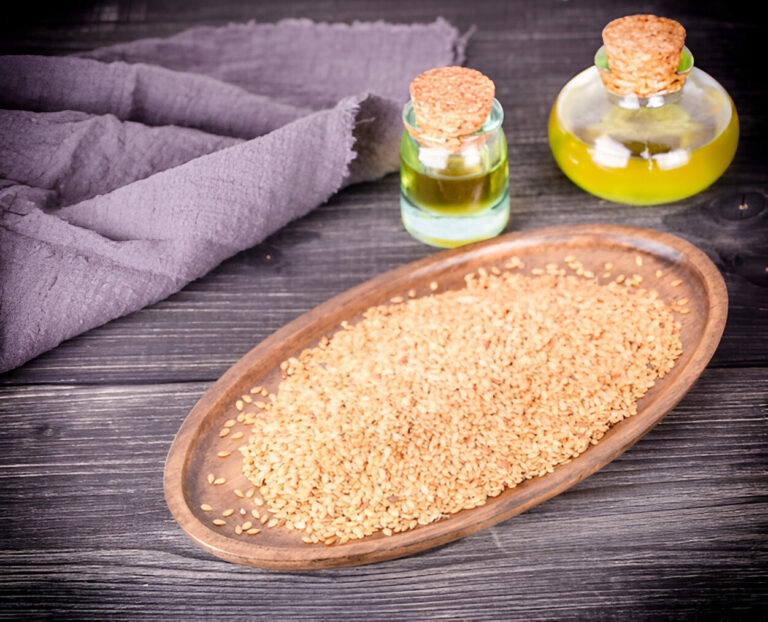🌿 Tahini – The Golden Whisper of the Sesame Seed
In a quiet kitchen where the sun spills over dusty countertops and olive wood spoons rest like sleeping memories, a jar sits, half full of tahini, half full of nostalgia. Open it, and you’re not just tasting sesame—you’re tasting centuries of stories, of hands that ground, of hearts that healed.
Tahini isn’t just food. It’s a feeling.
🌱 What is Tahini?
It is not just ground sesame—it’s the memory of harvest moons. It’s the earth singing in a past, nutty and bold, soft like lullabies and ancient like prayers whispered beneath fig trees.
Tahini is born when sesame seeds, kissed by the sun and soil, are roasted and pressed into a silken stream of gold. It flows thick like honey, yet carries a deep, smoky whisper of something wilder, something older than language.
🌍 A Journey Through Time – The Ancient Roots of Tahini
Long before the world had spoons shaped like hearts and jars sealed with plastic, tahini was born in mud ovens and stone mills. In the cradles of Mesopotamia, Persia, and the Levant, it was made with hands weathered by love and labor.
The sesame seed, a symbol of immortality in Babylon, gave rise to this sacred paste. It moved through lands and languages, carried by caravans and mothers, across deserts and dining tables.
🔥 The Art of Making Tahini – From Seed to Soul
Making tahini is an act of patience.
The sesame seeds are toasted—never rushed—just enough to release their breath. Then, the ground is not crushed, so their soul remains intact. The result? A paste that pours slowly, like the storytelling voice of your grandmother.
Modern factories may process it quickly, but the spirit of tahini still resides in the slow method. The stone-ground kind still hums with the rhythm of old songs and the sound of cracked clay bowls.
💖 Health in a Spoon – The Blessings Hidden in Tahini
Behind its creamy embrace is a treasure of wellness.
- Calcium: Enough to fortify your bones without touching milk.
- Iron & Magnesium: Gentle guardians of your blood and nerves.
- Plant-based Protein: A gift to the vegan soul and the mindful eater.
It’s the kind of food that feeds you beyond hunger. It heals.
🍴 More Than a Dip – Tahini Across the Table of the World
In Lebanon, it’s folded into hummus like a sacred secret.
In Turkey, it’s mixed with grape molasses to create “tahin-pekmez,” which is as sweet as a summer morning.
In Iran, it glazes flatbread with warmth.
In Israel, it’s poured over roasted eggplants like a blessing.
In Japan, it is mimicked with ground sesame in noodle sauces.
Tahhiini is a nomad. A peacemaker. It adapts, transforms, and lives inside every culture that welcomes it.
🧈 Tahini vs Butter – A Healthier Embrace
Let go of butter’s burden. Let tahini take its place.
No cholesterol, no animal sorrow—just seeds and sunshine. Spread it on bread and feel your heart thank you.
🎨 A Taste of Memory – Emotional Nourishment in Every Bite
There’s something strangely comforting about tahini. Like a scent that pulls you back to your childhood kitchen. Like the soft hum of your mother mixing it with honey for toast before school.
It’s the kind of food that brings tears without reason. Because it tastes like home, even if you’ve never tasted it before.
🔮 How to Choose the Right Tahini
Forget brands. Look for emotion.
The best tahini is:
- Smooth but not watery
- Nutty but not bitter
- Pale gold—not too white, not too dark
Smell it. Stir it. Let it speak to you.
🛒 Where to Find Real Tahini
Not all jars are born equal. Look in:
- Middle Eastern markets
- Organic food stores
- Family-run businesses that spell “tradition” in every swirl
Online? Yes. But choose those that tell you where the sesame came from, not just what’s in the jar.
🥄 How to Keep Tahini Alive at Home
Tahhiini is sensitive. It separates when ignored. But like all good things, it just needs a little attention.
- Store in a cool place
- Stir gently when the oil floats to the top
- Don’t refrigerate unless you must—it likes warmth

🍯 Five Easy Ways to Use Tahini (That Feel Like Hugs)
- Tahini + Honey – A sweet prayer for breakfast.
- Tahini + Lemon + Garlic + Water – A soulful dressing.
- Tahini in Brownies – Add depth to your joy.
- Tahini Drizzle on Roasted Veggies – An orchestra of flavor.
- Tahini by the Spoonful – Because sometimes, healing needs no reason.
🌿 Sustainable, Gentle, and Kind – The Eco Love of Tahini
Sesame plants are drought-resistant and require little to thrive. They give much, ask little. Tahini, therefore, is more than kind to your body—it’s kind to the Earth.
And that matters now more than ever.
🏠 Make It Yourself – A Jar of Home in Your Hands
You’ll need:
- 1 cup sesame seeds (hulled, if you want a softer flavor)
- 2–3 tbsp olive oil
- A pinch of salt
How to:
- Toast the seeds lightly until fragrant.
- Blend them with oil and salt until creamy.
- Store in a jar. Label it: For days when I need comfort.
🌀 The Circle Completes – In Every Spoon, A Universe
In the whirl of tahini, we find stillness.
It connects us to the farmer, the mother, the child, the wanderer. It transcends borders, diets, languages. It’s both ancient and now. Heavy and healing. Nutty and nurturing.
Tahini is not just food. It’s a soul that chose to be edible.
❓FAQs About Tahini
Q1: Is tahini gluten-free?
Yes. Pure tahini is free of gluten and friendly for celiac and gluten-sensitive individuals.
Q2: Can kids eat tahini?
Of course. It’s rich in good fats and nutrients—but introduce slowly in case of sesame allergies.
Q3: Can I bake with tahini?
Absolutely. Add it to cookies, brownies, even banana bread for an extra layer of richness.
Q4: Why is my tahini bitter?
Over-roasted sesame seeds can cause bitterness. Look for pale, lightly toasted versions for a smoother taste.
Q5: Does tahini go bad?
Yes, eventually. Use within 6 months, and store it cool and dry. If it smells sour, it’s time to say goodbye.
